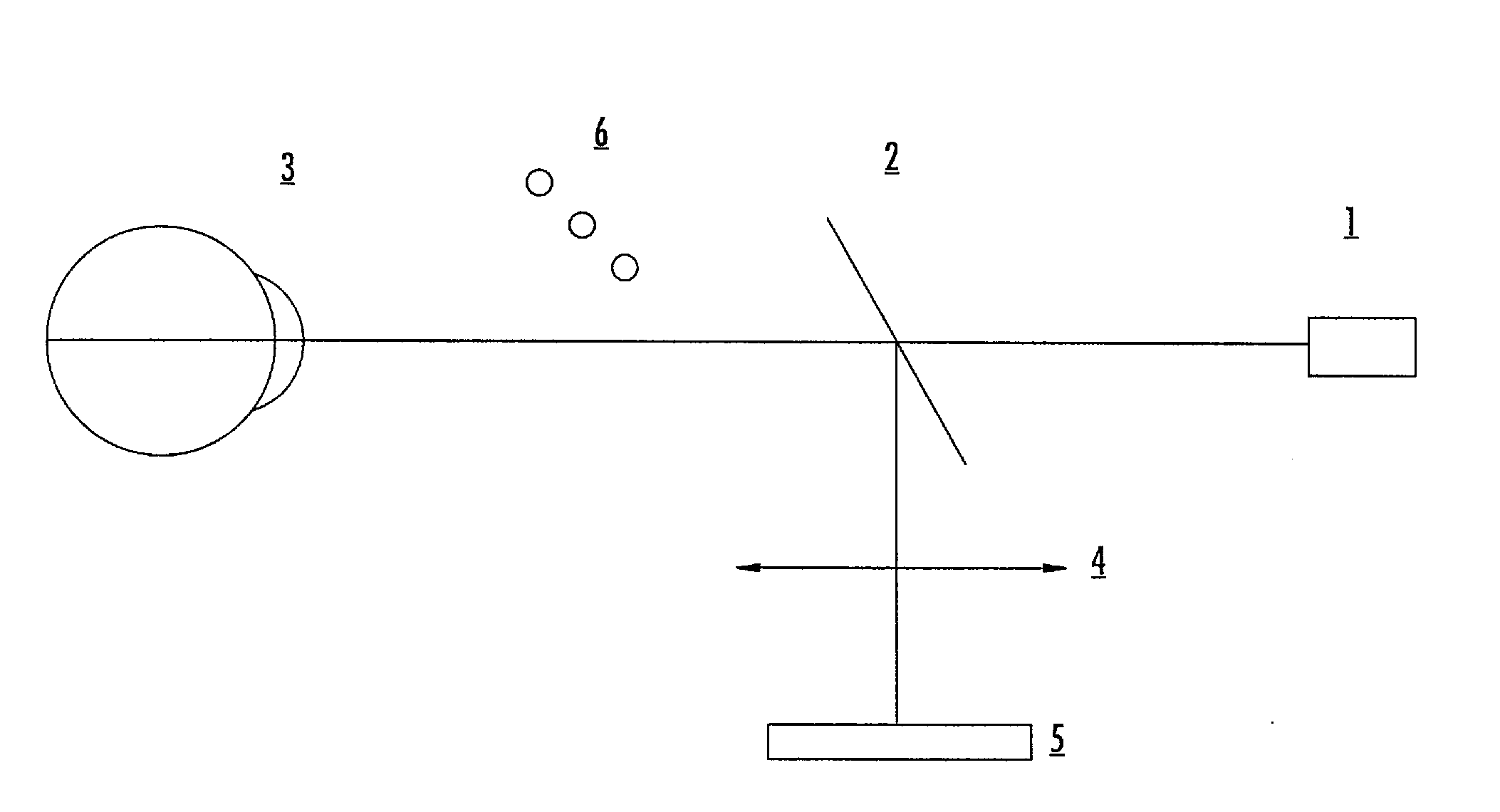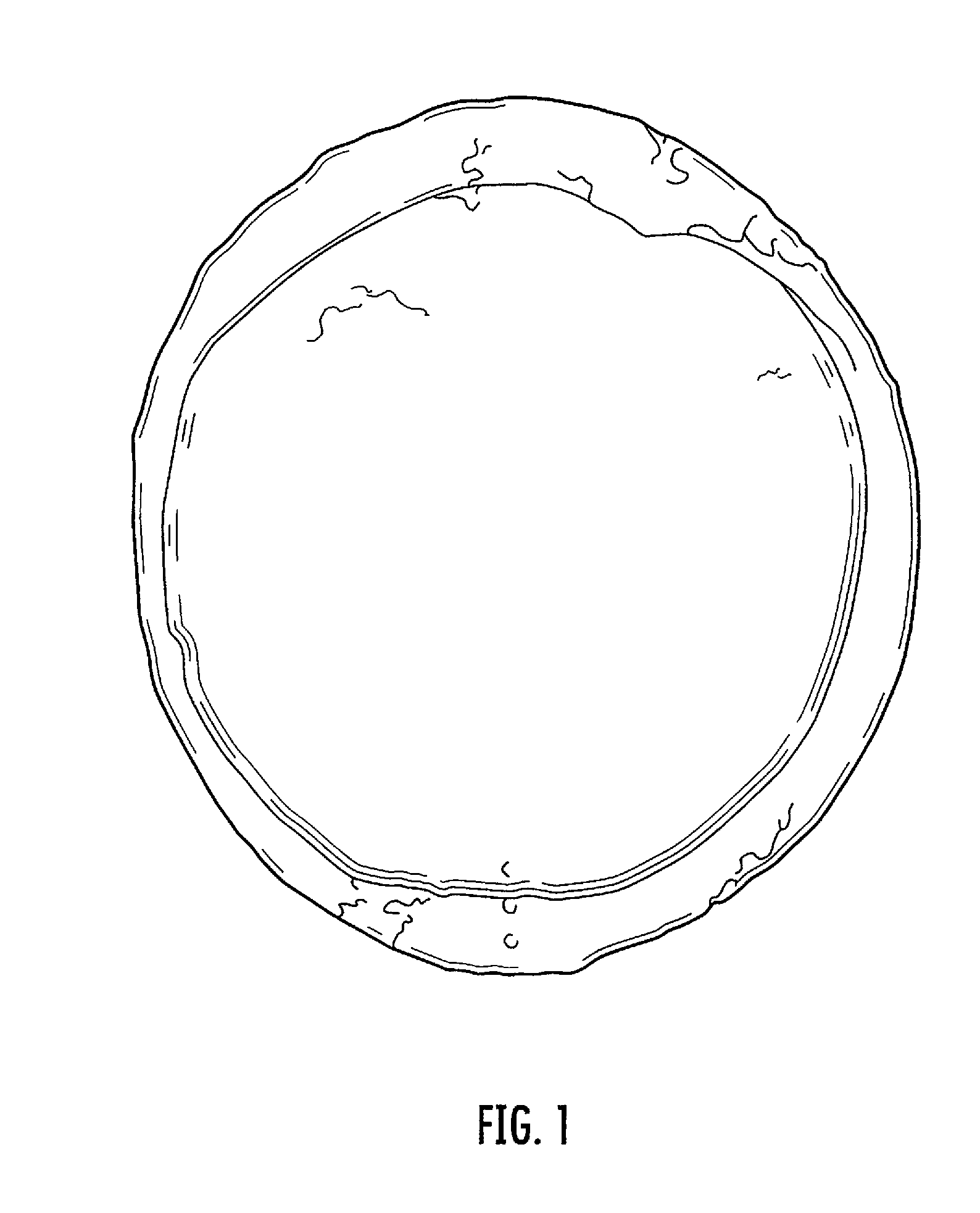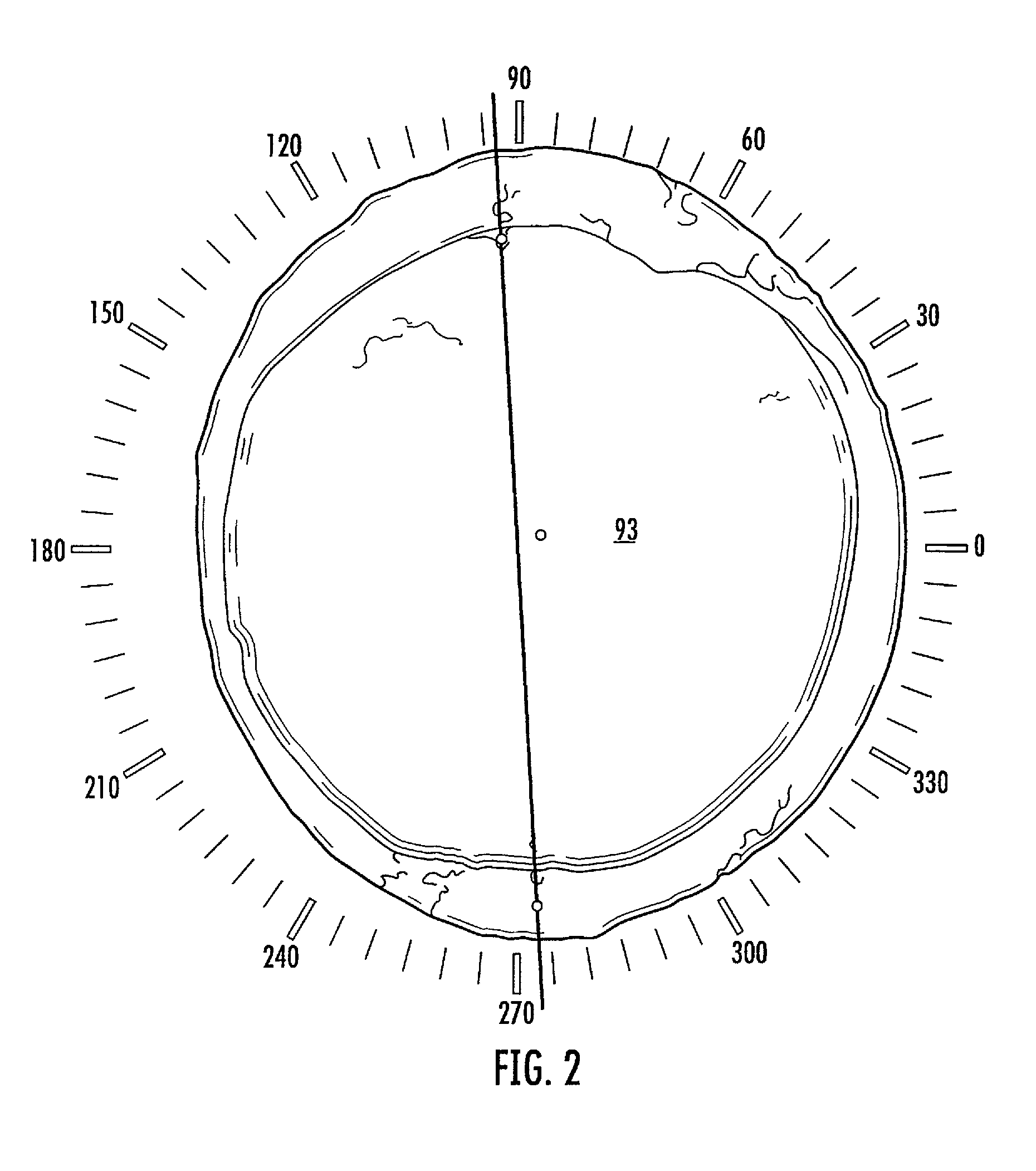Retro-illumination and eye front surface feature registration for corneal topography and ocular wavefront system
- Summary
- Abstract
- Description
- Claims
- Application Information
AI Technical Summary
Benefits of technology
Problems solved by technology
Method used
Image
Examples
Embodiment Construction
[0022]The basic optical layout for the retro-illumination and the front eye image features acquisition is shown in FIG. 6. Here, a near IR beam of light originates at SLD 1 and is directed though beam splitter 2 toward the eye 3. This beam forms a diffuse reflection at the retina and the light is directed out of the eye filling the entrance pupil and back illuminating the toric IOL within the eye. Light from the back lit toric IOL is directed by beam splitter 2 toward the lens 4 and forms an image on the camera sensor 5. This is the retro-illuminated image of the toric IOL. Immediately after the retro-illuminated image is captured, the SLD 1 is turned off, and the near IR LEDs 6 forming the light for the corneal topography rings are turned on. This light reflects off the front of the eye including the iris and sclera and is directed by beam splitter 2 to lens 4 and also forms an image on camera sensor 5. This second image is thus captured within a camera frame duration (typically 33...
PUM
 Login to View More
Login to View More Abstract
Description
Claims
Application Information
 Login to View More
Login to View More - R&D
- Intellectual Property
- Life Sciences
- Materials
- Tech Scout
- Unparalleled Data Quality
- Higher Quality Content
- 60% Fewer Hallucinations
Browse by: Latest US Patents, China's latest patents, Technical Efficacy Thesaurus, Application Domain, Technology Topic, Popular Technical Reports.
© 2025 PatSnap. All rights reserved.Legal|Privacy policy|Modern Slavery Act Transparency Statement|Sitemap|About US| Contact US: help@patsnap.com



